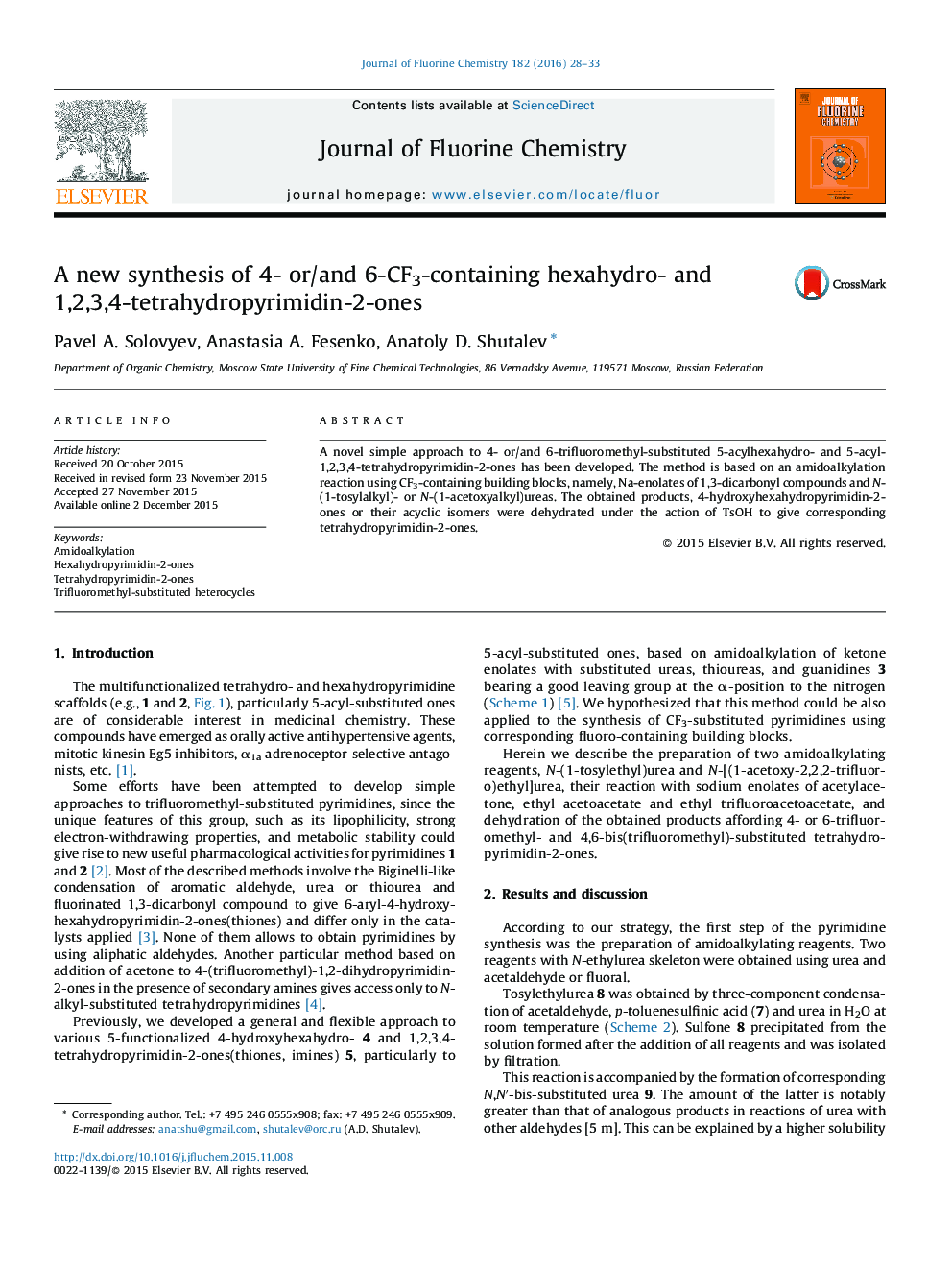| Article ID | Journal | Published Year | Pages | File Type |
|---|---|---|---|---|
| 1313549 | Journal of Fluorine Chemistry | 2016 | 6 Pages |
•A novel approach to 4-CF3- or/and 6-CF3-substituted pyrimidin-2-ones was developed.•The pyrimidine synthesis included amidoalkylation using CF3-containing building blocks.•New amidoalkylating reagents on the basis of urea and ethanal or fluoral were prepared.•Amidoalkylation of 1,3-dicarbonyl compound enolates to give pyrimidines was studied.•Products of amidoalkylation were dehydrated into 1,2,3,4-tetrahydropyrimidin-2-ones.
A novel simple approach to 4- or/and 6-trifluoromethyl-substituted 5-acylhexahydro- and 5-acyl-1,2,3,4-tetrahydropyrimidin-2-ones has been developed. The method is based on an amidoalkylation reaction using CF3-containing building blocks, namely, Na-enolates of 1,3-dicarbonyl compounds and N-(1-tosylalkyl)- or N-(1-acetoxyalkyl)ureas. The obtained products, 4-hydroxyhexahydropyrimidin-2-ones or their acyclic isomers were dehydrated under the action of TsOH to give corresponding tetrahydropyrimidin-2-ones.
Graphical abstractEffective synthesis of mono- and bis-CF3-substituted 5-acyl-1,2,3,4-tetrahydropyrimidin-2-ones based on amidoalkylation of Na-enolates of 1,3-dicarbonyl compounds followed by dehydration of the obtained products has been developed.Figure optionsDownload full-size imageDownload as PowerPoint slide
